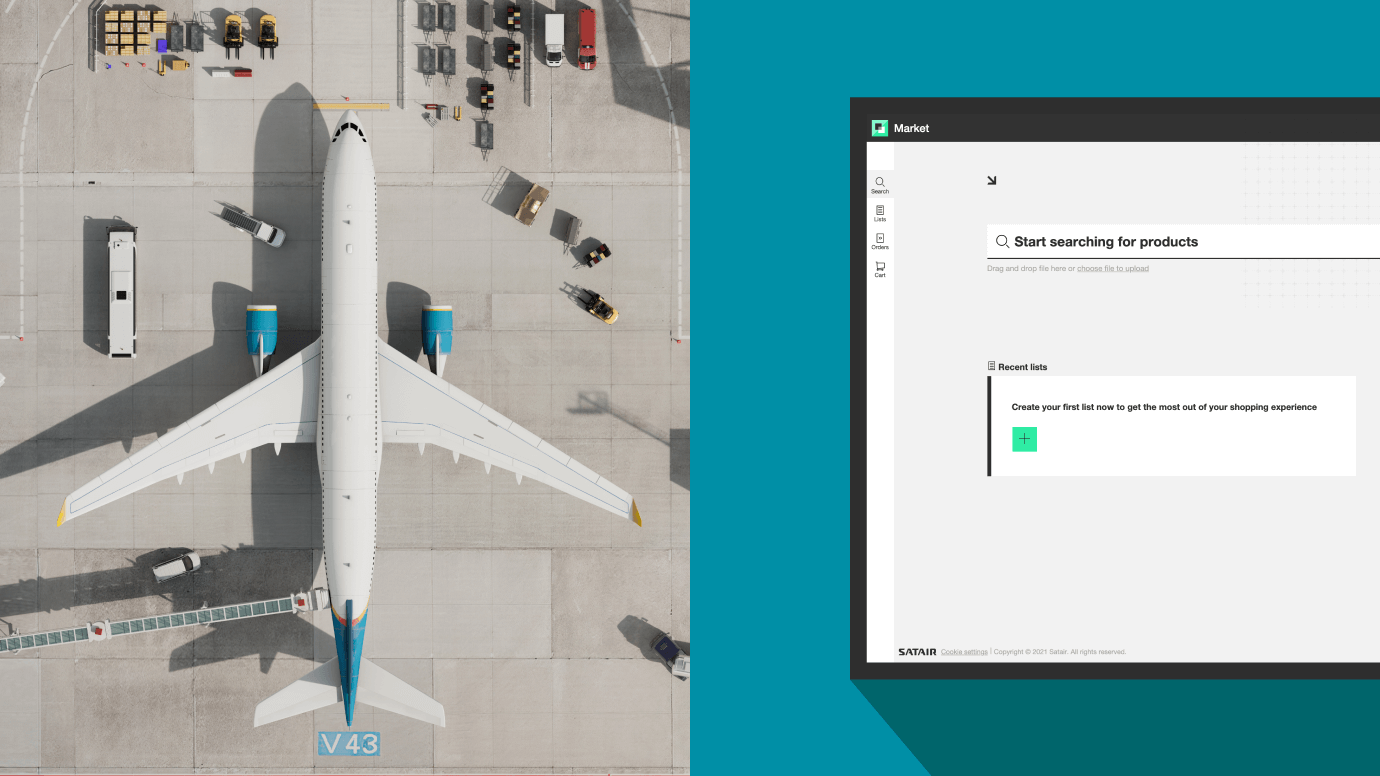Brave new world: digital marketplace trading a boon to aviation supply chain

The growing tendency to use digital marketplaces to buy and sell aircraft parts is a boon to the aviation supply chain.
Not only have they helped to soften the blow of job losses during the pandemic, but they are better suited to current needs, suiting both buyers in need of short-term solutions and those still feeling the financial pinch.
Overall, the emergence of the digital marketplaces has coincided with a seismic shift in the way that used serviceable material (USM) and surplus aircraft parts are traded.
With an influx of aircraft storage, will there be an increased strain on aircraft parts supply?
Rethinking their strategies
Prior to the pandemic, buyers tended to purchase enough aircraft parts to build an inventory buffer that would be there when needed.
Likewise, operators and maintenance shops often didn’t bother to offload parts until they had a large enough surplus that could be sold off in bulk – often at bargain prices.
But the industry-wide downturn brought on by COVID-19 made both sides rethink their strategies. Buyers of parts, typically airlines, chose to reduce a lot of their inventory because of their cash flow challenges.
The sellers, which are typically original equipment manufacturers (OEMs) and dedicated parts and services providers, started to view their supply chains as a means of offsetting some of their losses.
Benefitting both buyers and sellers
With their inventories reduced, airlines switched their attention to digital marketplaces to find and buy parts.
Vincent Joséphine, Manager of B2B Customer Success at e-commerce company Mirakl, explains how digital marketplaces offer significant benefits to both buyers and sellers of aviation parts.
"Buyers gain access to an extended range of products and a one-stop shop that offers a seamless end-to-end experience within a curated ecosystem of vetted sellers," he notes.
"Sellers get access to a larger customer base, enhanced visibility and additional revenue from a new distribution channel."
How digital marketplaces can help aircraft buyers
More open to shopping around
Mirakl's industry-leading software powers the Satair Market, where Satair's own extensive inventory of parts are sold alongside those of approved third-party sellers.
This wide variety of available parts provides buyers with numerous options, including the condition of the parts they need.
According to Allan Uldahl Riis, the Director of Commercial Strategic Programmes at Satair, buyer behaviour on that front has changed significantly as a result of the industry crisis.
“Previously, airlines might have only used factory-new parts but now they are more willing to buy a surplus part or even a used part. And they’ve also really opened up their supplier base. Whereas before they may have only bought from one or two preferred suppliers, they’re now open to the idea of using multiple suppliers,” he says.
More likely to negotiate the price
The increased use of the digital marketplaces helped both sides get a more accurate sense of the fair market value of aviation parts.
Buyers were able to use the digital marketplaces to compare prices, while sellers were able to gauge the market-wide availability of certain parts and set their prices accordingly.
Overall, this increased the likelihood of both sides negotiating the price.
Less likely to buy or sell in bulk
Nevertheless, many buyers accepted paying a slightly higher per-item price rather than buying in bulk. And according to Riis, that’s a trade-off many were willing to make.
“Ordering on-demand might result in paying a little bit more, but it’s not likely to be a dramatic difference. More importantly for the buyers, they were reducing the risk of ending up with obsolete parts,” he explains.
In general, both buyers and sellers adopted a more short-term approach. Buyers switched to only acquiring what they would need over the next month, and sellers realised they could get much higher margins by selling the parts individually.
Digital marketplaces help parts sellers get maximum profit with minimum effort
Helps to alleviate labour challenges
The digital marketplaces also helped to soften the blow of the job losses both buyers and sellers suffered during the pandemic.
Traditional sales models were highly labour-intensive, requiring an interested buyer to send an email to a seller, who would then search for the part in an internal system and then turn around a quote if it was available.
Marketplace systems can be easily integrated into buyers’ and sellers’ own systems, greatly reducing time-consuming manual processes. When a marketplace provider also screens both buyers and sellers, risks are also reduced on both ends.
“Sellers have come to realise that it’s actually quite easy to sell parts directly through these types of platforms, while buyers are able to cast a wider net in order to get a favourable price on the parts they need and still be sure that it will be delivered as promised and come with all of the appropriate paperwork,” Riis says.
More open to a digital future
While many of the behavioural changes can be directly linked to the financial impact of the pandemic, some of the market dynamics can also be explained by the aviation industry slowly but surely becoming more comfortable with the types of digital solutions that have long existed in other sectors.
"The aviation industry has very specific standards and certifications, as well as precise and detailed regulations regarding maintenance activities," Joséphine explains.
"Aviation spare parts are also more complex than those in other industries. This may have slowed the process to implement the marketplace model, but it has been progressing significantly over the last years."
Losing control … and they think they like it
Riis adds that airlines and other aviation companies have historically wanted to maintain complete control of their own value chains, but are now starting to realise that it may actually be beneficial to give up some control.
"You don’t necessarily need to have control of everything," he says.
"And when it comes to buying and selling parts, there are platforms for that.”
